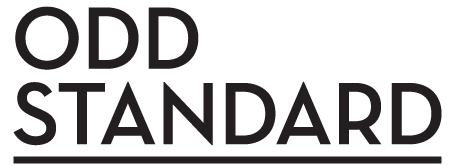Stories on us.
Elle Decoration Spain
“Chefs and designers work very well together, with a different focus towards the same objective: to create a gastronomic experience. There is a lot of variation in what each chef is looking for. They often know which feeling or mood they wish to create in their restaurant and way of serving, for instance keeping a very high feeling of quality while still keeping it casual and away from the fine dining feeling.”
D2
This is the first time he has seen the tableware that Odd Standard has developed over the past year. Some things have been tested, others are new and have never been tried before. Tonight he will find a way to use all the objects during dinner service. What can he put in the heavy soap stone bowls? How can he serve advanced food on a plate of recycled brown cardboard. The produce has already beeen ordered and the dishes are planned. But now he has to find out how to plate the dishes in an entirely new way for 18 guests.
A New Type of Imprint
They traveled around Scandinavia collecting thoughts and ideas from famous chefs for what would be the perfect tableware. Their goal was to find the recipe for how they could enhance the experience of eating even better. Be it a gourmet restaurant or a low key place, they gathered all the inspiration and information they could get, and discovered that chefs and designers aren't really that different. And thus began Odd Standard.
Mat fra Norge
"We wanted to create something in between industry and craft production. When we heard that restaurants had to wait for almost a year for 30 plates produced by ceramicists, we thought that there must be room for the in-between. Something that was not industry but also not craft."
Stavanger Aftenblad
"We have a strong urge to test new things. It may very well be strange and experimental, but we always go out of our way to make it functional. Thing can easily become "too much", and we always keep that in mind. It's like watching a fashion show on a runway, where someone has gone too far and put too much into it. You must keep this in mind with all types of designs. Our starting point is that the design of a product is not finished until the chef has put it into use."
Arkitektnytt
The design duo wanted to recreate the experience of picking berries or fruit from a tree at the restaurant table, but somewhat more abstract and with a more raw expression. "Processing something that is shaped by nature - here the juniper - and combining this with the man-made concrete, has been another way of working with design than what we usually do."
Nord
With the brand Odd Standard they develop innovative products for chefs and restaurants. Wood, metal, stone, ceramics and porcelain, traditional materials with a new twist.
Condé Nast Traveller
Meanwhile, the rise of 20-course tasting menus has led to bespoke creations for indivdual courses, such as (…) and the surreal works conjured by Norway’s Odd Standard, which once embalmed two chicken feet in clay for Oslo’s Rest destination.
Financial Times
Besides its beauty, what sets Odd Standard’s work apart is its durability. “A lot of ceramics look amazaing, says Froggatt, “but when they actually get into a busy restaurant they don’t always stand up to the dishwasher, to being moved about and stacked.” For Odd Standard, functionality is always key.
Elle Decoration UK
Perfectly located to feed the New Nordic hunger for bespoke tableware that speaks to the terroir, Stavanger-based Norwegian designers Constance Gaard Kristiansen and Tonje Sandberg formed Odd Standard in 2014, specifically to feed the plating fantasies of chefs. The pair’s brilliance has means their work adorns tables across Scandinavia and beyond.
Plnty
We have the same attitude that you often find among chefs: that you should use the whole animal. Why should we throw away the things that do not match the end result, just because it is a bit irregular or because they do not look like each other and can be sold as a series of identical products? It always has a value for some.
Ulterior Epicure
Haatuft also invited Constance Kristiansen and Tonje Sandberg, two designers who had left a large ceramic design firm to open their own, Odd Standard. Haatuft had worked with these two before, and wanted to include them in this event. Based in Stavanger, a city south of Bergen, Kristiansen and Sandberg were asked to create special service pieces just for this dinner. Their contribution turned out to be one of the most dynamic aspects of that weekend for me.
Appetitt
The designers know what they are doing, but believe that the most interesting results arise when the designer and the chef work together. "The best thing about this method is that both parties can learn from each other. They can explain what they are looking for, and maybe we can challenge and inspire the customers. Then we have done a good job."
Horeca
Chefs are concerned about what is communicated when the food is served, but the tableware does not always support the story they want to tell. This is were two girls with a good sense of design and functionality play a part. They produce tableware in shapes and materials that are not exactly A4.
